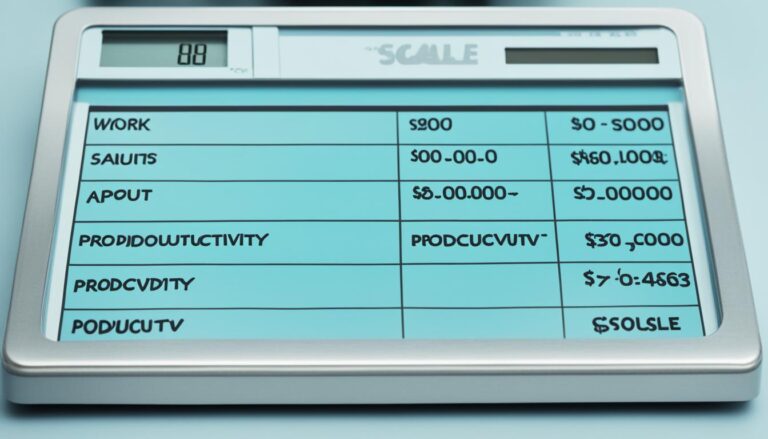Unlock Your Potential: Performance Review Examples

Do you want to unlock your full potential at work? Are you looking for effective ways to improve your job performance and achieve professional growth? Performance reviews hold the key to unlocking your potential and maximizing your success.
Performance reviews are not just about receiving feedback from your manager; they are a valuable opportunity to reflect on your strengths, set goals for improvement, and align your performance with the objectives of your organization. By understanding the power of performance reviews and utilizing the right strategies, you can take your career to new heights.
In this article, we will provide you with a comprehensive guide to performance reviews, including examples of effective performance review templates and evaluation forms. Whether you are a manager seeking performance review examples or an employee looking for ways to enhance your performance, this article will equip you with the tools you need to unlock your potential and excel in your career.
Are you ready to take the next step in your professional journey? Let’s dive into the world of performance reviews and discover the path to unleashing your true potential.
Key Takeaways:
- Performance reviews are an opportunity for growth and development
- Setting clear review standards is crucial for effective performance evaluations
- Positive feedback reinforces employee strengths and motivates performance
- Constructive criticism helps identify areas for improvement
- Open dialogue fosters a supportive and productive work environment
The Power of Positive Feedback: Performance Evaluation Phrases That Emphasize Strengths
Positive feedback plays a vital role in performance reviews. When you acknowledge and praise your team members for their strengths and exceptional work, it not only reinforces their positive actions and attitudes but also motivates them to continue excelling. By highlighting their strengths, you create a supportive and encouraging work environment that fosters growth and high performance.
Here are ten performance review phrases that you can use to emphasize and celebrate your team members’ strengths:
- Positive attitude: John consistently maintains a positive attitude, even in challenging situations, which inspires others and contributes to a harmonious work environment.
- Handling difficult experiences: Sarah demonstrates resilience and resourcefulness when faced with challenging situations, utilizing her problem-solving skills to find effective solutions.
- Excellence in client relationship management: Alex builds strong client relationships by truly understanding their needs and provides exceptional service, resulting in high client satisfaction and repeat business.
- Willingness to provide and welcome feedback: Rebecca actively seeks feedback from her peers and supervisors, demonstrating a commitment to continuous improvement and growth.
- Dependability: Mark consistently delivers high-quality work on time, demonstrating reliability and earning the trust of his team members.
- Creativity in problem-solving: Emily consistently thinks outside the box and comes up with innovative solutions to complex problems, contributing to process improvements and efficiency.
- Ability to handle change: Michael adapts quickly to new situations, embracing change with a positive mindset and helping the team navigate transitions smoothly.
- Calmness under pressure: Laura remains composed and focused during high-stress situations, leading by example and instilling confidence in the team.
- Ability to make others feel important: James has a remarkable ability to make everyone feel valued and appreciated, fostering a positive and inclusive team culture.
- Skill in working with different personalities: Sarah effectively collaborates with team members of diverse backgrounds and perspectives, promoting a harmonious and collaborative work environment.

Recognizing and highlighting your team members’ strengths not only boosts their confidence but also encourages them to continue performing at their best. By incorporating these positive feedback phrases into your performance reviews, you can inspire your team members to reach even greater heights of success.
Constructive Criticism for Growth: Performance Evaluation Phrases That Show Room for Improvement
Providing constructive criticism in performance reviews is essential for helping employees improve their weaknesses. It is important to address areas where employees may have fallen short of expectations and provide guidance on how to improve.
Performance Review Phrases for Growth
- Not meeting performance goals
- Needing to improve teamwork skills
- Not meeting attendance standards
- Having difficulty following through with tasks
- Trouble staying organized
- Not viewing the workplace as a team environment
These are just a few examples of performance review phrases that can be used to show room for improvement. By offering specific and actionable feedback, employees can understand areas for growth and work towards improvement. By utilizing a self-evaluation for the performance review, employees can reflect on their own performance and set goals for themselves moving forward.
Performance Review Comments for Self-Evaluation
Encouraging employees to evaluate their own performance can be a valuable exercise in self-reflection. It allows them to take ownership of their strengths and weaknesses and set goals for improvement. Some performance review comments for self-evaluation can include:
| Strengths | Areas for Improvement |
|---|---|
| Excellent attention to detail | Need to improve time management skills |
| Strong problem-solving abilities | Struggle with meeting deadlines consistently |
| Exceptional communication skills | Could benefit from improving presentation skills |
| Highly motivated and proactive | Need to develop stronger leadership skills |
By incorporating self-evaluation into performance reviews, employees can actively participate in their own growth and development.
Performance Review Goals and Objectives
Setting goals and objectives during performance reviews is an effective way to provide employees with clear direction for improvement. By establishing specific targets, employees can focus their efforts on achieving measurable results. Some examples of performance review goals and objectives include:
- Increasing sales productivity by 15% within the next quarter.
- Completing all assigned tasks on time and meeting deadlines consistently.
- Improving customer satisfaction ratings by 10% through enhanced communication skills and problem-solving abilities.
- Attending all team meetings and actively contributing ideas and suggestions.
By setting performance review goals and objectives, employees have a roadmap for improvement and can track their progress over time.

Best Practices for Conducting Performance Reviews
Conducting performance reviews requires careful planning and effective communication. To ensure a successful review process, follow these best practices:
- Set review standards: Clearly define the expectations and criteria for evaluating employee performance. By establishing clear benchmarks, both managers and employees have a common understanding of what constitutes success.
- Keep a positive and constructive tone: During the performance review, it is important to focus on highlighting achievements and providing guidance for improvement. A positive and constructive tone fosters a supportive environment that encourages growth and development.
- Be specific: Offer specific and detailed feedback that is actionable. Avoid general statements and provide examples to help employees understand their strengths and areas for improvement.
- Use quantifiable goals and data: Utilize measurable goals and data to support performance assessments. This provides objective evidence of an employee’s progress and performance.
- Foster open dialogue: Encourage employees to share their thoughts, aspirations, and concerns during the review process. This open dialogue helps build trust and strengthens the manager-employee relationship.
- Use a performance review template: Having a structured template can help ensure that all important aspects are covered during the review. A performance review template provides a consistent framework that promotes fairness and thoroughness.

By following these best practices, you can conduct performance reviews that are effective, fair, and supportive. Remember, the goal of a performance review is to unlock the potential of employees and contribute to their professional growth and the success of the organization.
The Changing Landscape of Performance Reviews
Performance reviews have evolved over time to adapt to the changing landscape of the workplace. Traditional annual reviews have been criticized for their lack of effectiveness and fairness. In response, organizations are embracing modern performance review approaches that foster continuous improvement and prioritize ongoing feedback.
One of the key aspects of the changing landscape of performance reviews is the focus on frequent discussions. Rather than waiting for one annual review, organizations are encouraging more regular conversations between managers and employees. This allows for real-time feedback, progress tracking, and the opportunity to address any performance issues promptly.
Another important shift is the emphasis on continuous improvement. Instead of viewing performance reviews as a mere evaluation of past performance, organizations are using them as a tool for development and growth. By providing employees with constructive feedback and guidance, organizations can help them identify areas of improvement and create personalized development plans.
This changing landscape also places a greater emphasis on employee motivation and engagement. Modern performance review approaches highlight the importance of recognizing and appreciating employees’ contributions. By acknowledging their efforts and accomplishments, organizations can foster a positive work environment and boost employee morale.
Overall, embracing modern performance review approaches not only aligns with the evolving needs of the workforce but also creates a more productive and supportive work environment. By prioritizing frequent discussions, continuous improvement, and employee motivation, organizations can unlock the full potential of their workforce and drive success.

Conclusion
Performance reviews play a pivotal role in fostering professional growth and improvement. They provide employees with the valuable opportunity to reflect on their performance, identify strengths, and focus on areas that require development. By offering both positive feedback and constructive criticism, performance reviews inspire individuals to set goals and take actionable steps towards improvement.
To ensure the effectiveness of performance reviews, it is essential to utilize best practices and adopt modern approaches. By setting clear review standards, maintaining a positive and constructive tone, and providing specific feedback, organizations can create an environment that encourages learning and development. Incorporating quantifiable goals and data further strengthens the review process, while fostering open dialogue allows for a deeper understanding of employees’ thoughts and aspirations.
The power of performance reviews lies in their ability to unlock the potential of employees and contribute to the overall growth and success of the organization. By embracing this invaluable tool, organizations demonstrate their commitment to supporting their workforce and nurturing a culture of continuous improvement. As performance reviews continue to evolve and adapt to changing workplace dynamics, they remain a cornerstone for achieving professional growth and improvement through valuable performance feedback.





